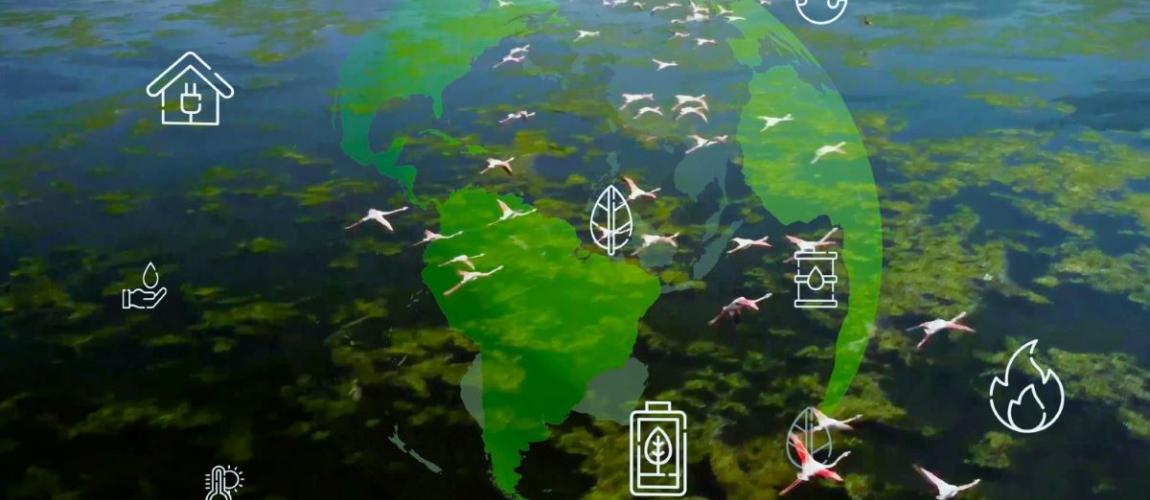Country Context-Driven Factors

Photo Credit: Image by Freepik
On this page: It is crucial to remain up to date with guiding regulations and market best practices in the assessment process. Read more below, or visit Strategic Guidance for Country System Assessments, Guidance for Countries in Assessing ERC Projects, or Mobilizing ERC Finance.
Country inputs for strategic national alignment criteria The ongoing development of Article 6.2 and 6.4 mechanisms related to corresponding adjustments warrants close attention as the carbon market continues to evolve. The initial decisions regarding cooperative approaches referred to in Article 6 have been adopted by the United Nations Framework Convention on Climate Change (UNFCCC), as outlined in the ‘Report of the Conference of the Parties serving as the meeting of the Parties to the Paris Agreement on its fourth session, held in Sharm el-Sheikh from 6 to 20 November 2022’ released on 17 March 2023. These outcomes provide initial guidance on Article 6 transactions, reporting, review, infrastructure, and capacity building. It is important to note, however, that the UNFCCC Supervisory Body is currently working towards building a more robust mechanism for the operationalization of Article 6, as established in the Paris Agreement. Recent strategic meetings, held on 5 and 6 March 2023, were conducted to discuss and develop further guidance towards this objective. As such, a limited number of countries have so far implemented such practices within their frameworks. As rules become clearer and more countries develop the necessary infrastructure to support the transfer of mitigation outcomes, it is crucial to remain up to date with guiding regulations and market best practices, which will impact the inputs for the Country inputs (S1) and Article 6 readiness and eligibility (S3) and their usefulness for decision-making based on the outcomes of Step 1 (Initial profiling) of the assessment process. Option to score project(s) As mentioned in Introduction to the Project Assessment Framework, for the use of the Guidelines where assigning scores to the project would be useful, the ratings used for the initial profiling and conduct of assessment steps can be mapped to scores of 1 to 5, where having significant opportunities for improvement, or needing clarity would correspond to a score of “1” and being most aligned with best practice would correspond to a score of “5”. If applicable, the weights of the scored criteria can be assigned based on the priorities of the Government and the objectives of the exercise, as described in Emission Reduction Credits. However, it is important to note that while it is possible to assign scores and derive an overall score for the project, using these scores to select projects or determine the overall potential of projects could be challenging. This is as assigning an overall score could lead to certain critical criteria being overlooked if the project scores well on other criteria, hence these nuances should be taken into account if using the scoring option.
This section is intended to be a living document and will be reviewed at regular intervals. The Guidelines have not been prepared with any specific transaction in mind and are meant to serve only as general guidance. It is therefore critical that the Guidelines be reviewed and adapted for specific transactions. Unless expressly stated otherwise, the findings, interpretations, and conclusions expressed in the Materials in this Site are those of the various authors of the Materials and are not necessarily those of The World Bank Group, its member institutions, or their respective Boards of Executive Directors or member countries. For feedback on the content of this section of the website or suggestions for links or materials that could be included, please contact the PPPLRC at ppp@worldbank.org.
Updated: June 4, 2024
TABLE OF CONTENTS
UNLOCKING GLOBAL EMISSION REDUCTION CREDIT
Guidance for Countries in Assessing ERC Projects
1. Introduction to Emission Reduction Credits
• The World Bank's Emission Reduction Program
•Classification of Emissions Reduction Credit
• Policy Context of Emissions Reduction Credit
2. Objective of the Guidance for Countries in Assessing ERC Projects
• Objective of Project Preparation Guidelines
• Introduction to the Project Assessment Framework
• Process to Conducting Assessments
• S1: Green Economy Priorities
• S3: Article 6 Readiness and Eligibility
4. Conducting the Initial Profiling and Making a Preliminary Decision
• F2: Additional Value Enabled by Project
• C1, C2, and C3: Carbon Integrity and Environmental and Social Risk Management
5. Conducting the Project Assessment and Making the Final Decision
• F1: Project ERC value and F2: Additional Value Enabled by Project
• Q2: Marketing, Sales, and Pricing
• Q3: Project Governance and Structure
• C2: Environmental Risk Management
• C3: Social Risk Management and Benefits
6. Further Guidance for Application
• Country Context-driven Factors
• Considerations for Future Scope
Abbreviations: Guidance for Countries in Assessing ERC Projects
• B: Project Assessment Template
Related Content
Additional Resources
Country Profiles
Page Specific DisclaimerThis is a new section of the PPPLRC website and is currently in draft form. Your feedback is welcome: If you would like to comment on the content of this section of the website or if you have suggestions for links or materials that could be included please contact us at ppp@worldbank.org.
KeywordsPublic-Private Partnerships Laws / Concession Laws
PPP Units Around the World